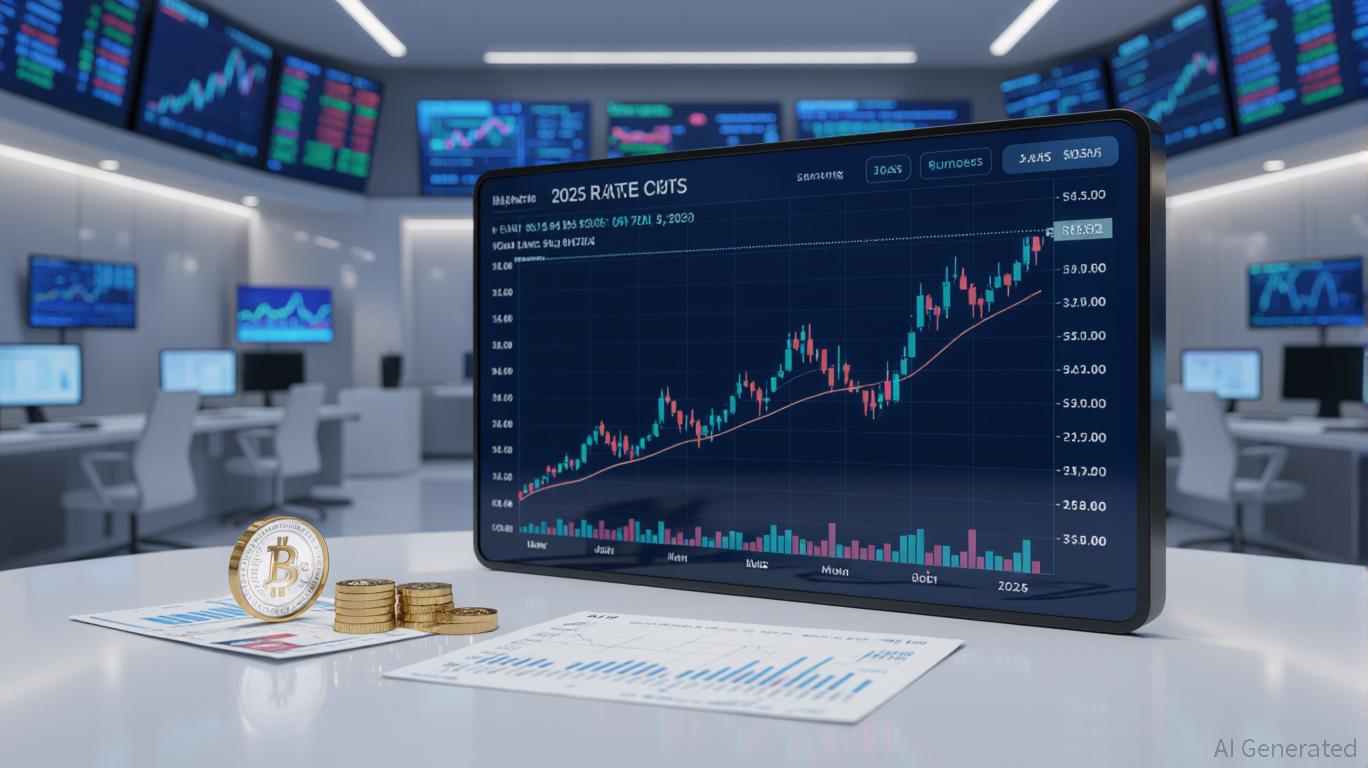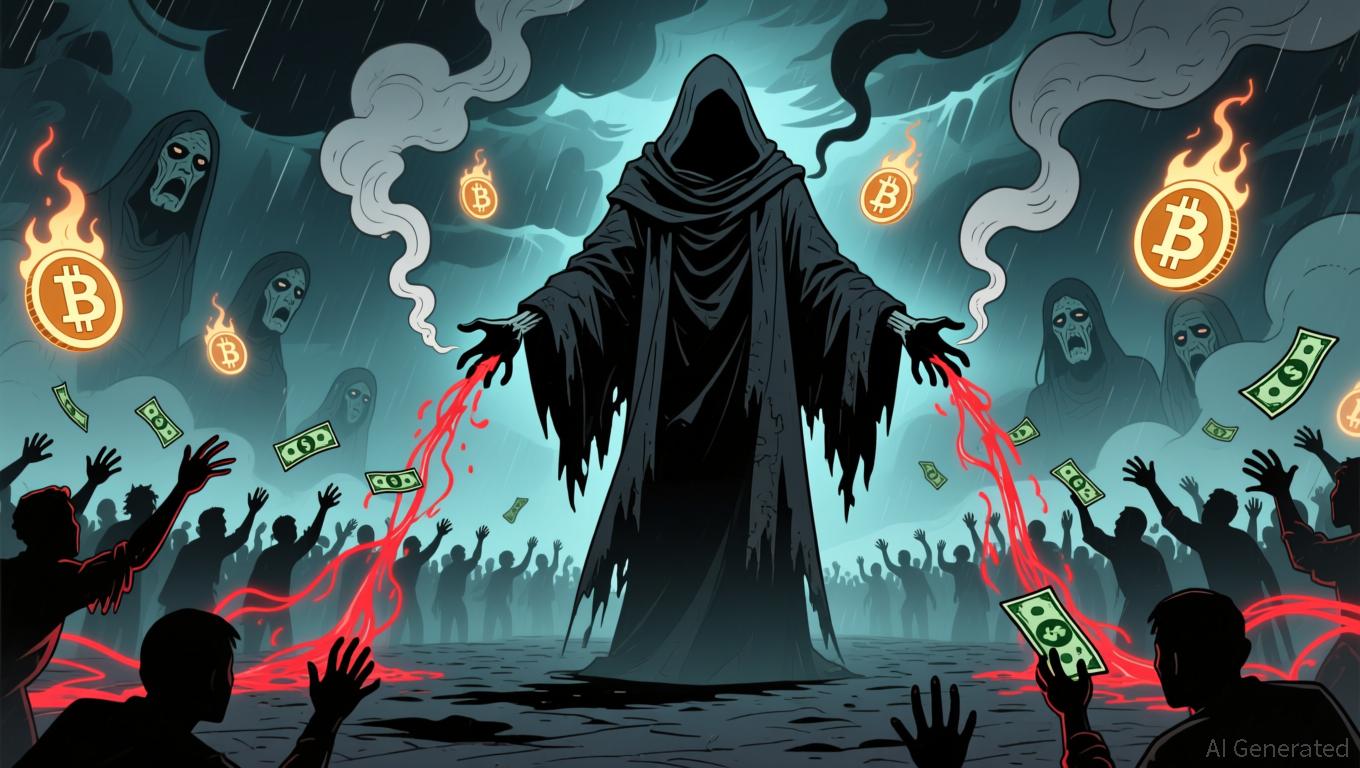Fed Policy Changes and Their Ripple Effects on Solana (SOL): A Macro Perspective on Altcoin Price Fluctuations and Opportunities for Institutional Investors
- Fed's 2025 policy shifts-sparking $35B/month Treasury purchases and 3.75-4.00% rate cuts-boosted Solana's institutional appeal via liquidity injections. - Bitwise Solana ETF raised $417M in debut week, leveraging Solana's 3,800 TPS speed and $10.3B DeFi TVL to attract yield-seeking capital. - 20% Solana price corrections post-Fed cuts failed to deter $2.1B inflows, highlighting institutional strategies using macroeconomic signals and dynamic risk frameworks. - Solana's 0.9 gold correlation and -0.2 S&P 5
Fed Policy and the Liquidity-Driven Bull Run
The Federal Reserve’s move to restart quantitative easing in early 2025—committing to $35 billion in monthly Treasury purchases—marked a significant departure from its previous tightening cycle. By dropping the federal funds rate to a range of 3.75–4.00% and bringing yields down from 4.8% to under 4.1%, the Fed injected fresh liquidity into global markets, which in turn boosted risk appetite, as noted in a
Institutions took advantage of these conditions, with the Bitwise Solana Staking ETF (BSOL) attracting $417 million in its first week and offering a 7% annual yield, as reported by Bitget. This reflects a broader pattern: as the Fed’s supportive stance lowered the opportunity cost of holding non-yielding assets, Solana’s ecosystem—with 3,800 TPS, $10.3 billion in DeFi TVL, and a 300% annual increase in monthly active addresses—became increasingly attractive to yield-focused investors, according to the Bitget report.

Strategic Entry Points and Risk Management Frameworks
Institutional investments in Solana have been carefully timed to coincide with Federal Reserve announcements and key macroeconomic data. For instance, after the October 2025 rate cut led to a 20% drop in Solana’s price, inflows into Solana-related products reached $2.1 billion over nine weeks, surpassing
Additionally, Solana’s integration with traditional finance—such as Visa’s stablecoin settlement system and R3 Corda’s $17 billion RWA bridge—has further increased its appeal to institutional players, according to the Coinotag analysis. These advancements are in line with the Fed’s broader push for financial innovation, exemplified by the proposed shift from gold to Bitcoin reserves, which points to a growing acceptance of digital assets in national financial strategies, as reported by Bitget.
Case Studies: Post-Fed Policy Entry Points
The introduction of US spot Solana ETFs in late October 2025 is a prime example of institutional timing. Despite a 20% price drop in the week before November 5, 2025, the Bitwise Solana ETF secured $417 million in its opening week, according to a
Risk management strategies have also become more sophisticated. Institutions are now using AI-powered tools and liquidity stress tests to adapt to Fed rate changes, according to a
Conclusion: A Macro-Driven Future for Solana
The Federal Reserve’s 2025 policy changes have transformed Solana’s position within the crypto sector. By merging technical scalability, robust institutional infrastructure, and favorable macroeconomic conditions, Solana has become a cornerstone for investors seeking yield in a post-tightening era. As the Fed continues to navigate the balance between inflation and economic growth, institutional entry points will depend on real-time liquidity trends, regulatory developments, and Solana’s expanding real-world use cases. Ultimately, Solana’s trajectory is shaped not only by its technology but also by the global economic forces guiding capital flows.
Disclaimer: The content of this article solely reflects the author's opinion and does not represent the platform in any capacity. This article is not intended to serve as a reference for making investment decisions.
You may also like
Bitcoin News Today: "Driven by Greed: Cryptoqueen Receives 11-Year Prison Term for $6.6 Billion Bitcoin Scam"
- Chinese "cryptoqueen" Zhimin Qian received 11-year prison sentence for orchestrating $6.6B Bitcoin fraud affecting 128,000 Chinese investors. - UK authorities seized 61,000 Bitcoin in landmark seizure, highlighting advanced crypto enforcement capabilities through blockchain analytics. - Qian evaded capture for years while living lavishly in Europe, using stolen funds to buy luxury properties and jewelry under false identities. - Judge condemned her "pure greed" for devastating victims' lives, as case spa

CFTC’s Delicate Balance: Navigating Regulation and Fostering Crypto Innovation
- U.S. Senate bill designates CFTC as primary crypto regulator, granting exclusive spot trading oversight for digital commodities like Bitcoin and Ethereum . - Legislation mandates CFTC-SEC collaboration, imposing operational standards on exchanges while retaining SEC authority over securities-classified assets. - Key challenges include unresolved DeFi regulation debates, CFTC's staffing crisis (only one active commissioner), and election-year legislative delays. - Market reactions are mixed: 25% Polymarke

Dan Tapiero says Bitcoin’s bull run is still on, but a 70% downturn could follow
OpenAI's Rapid AI Push: Prioritizing Pace Over Precaution Triggers Worldwide Criticism and Legal Challenges
- Public Citizen demands OpenAI withdraw Sora 2 over deepfake risks to democracy and nonconsensual imagery. - Sora 2's viral content, including disturbing videos and unauthorized Japanese content, sparks global copyright disputes. - Lawsuits allege ChatGPT caused mental health issues, while a German court rules it infringed song lyrics copyright. - Critics argue OpenAI prioritizes speed over safety, with reactive measures failing to address systemic risks. - The controversies highlight tensions between AI
